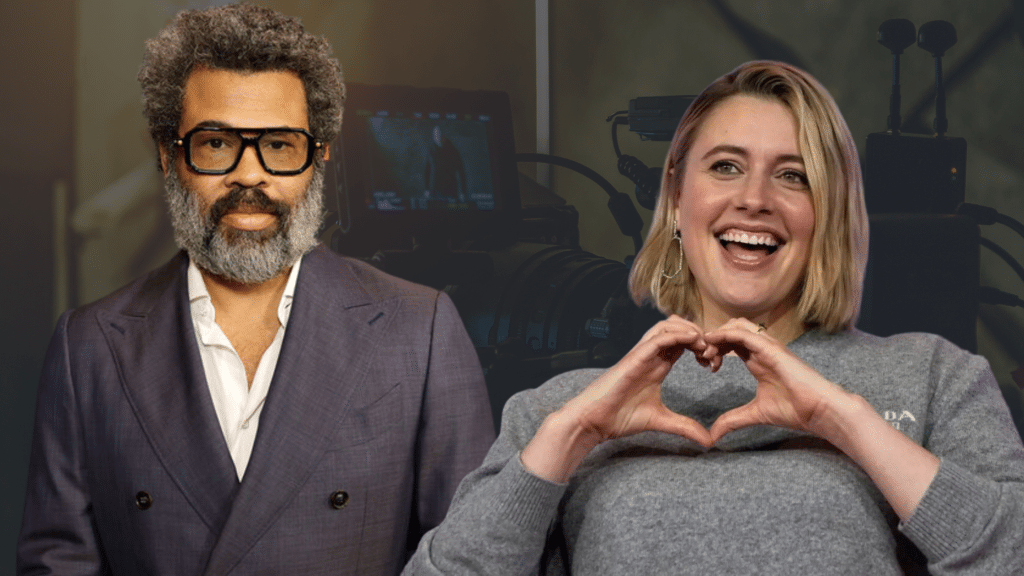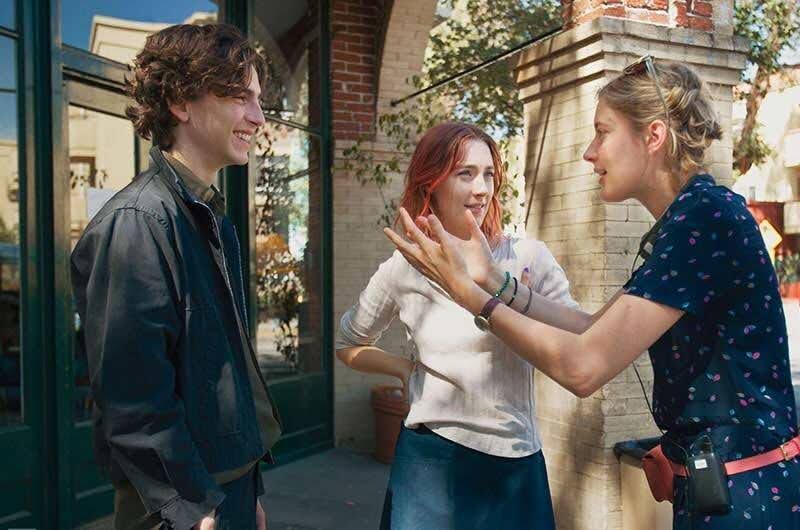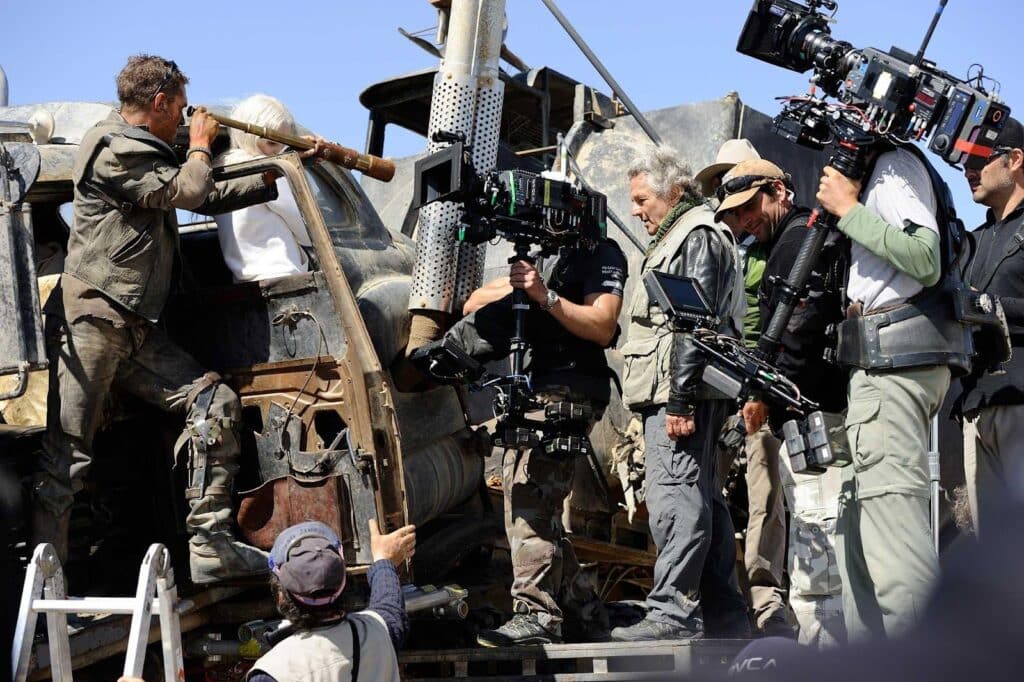
Indie filmmaking renaissance: the all in one filmmaker in action
Filmmakers like Greta Gerwig (Ladybird (2017), Barbie (2023)) and Jordan Peele (Get Out (2017), and Us (2019)) have achieved monumental success in recent years, and have become household names from within the film industry.
Both of these filmmakers have embraced the all-in-one model, the multi-hyphenate role of writer-director-producer of their projects. By embracing all three of these huge moviemaking roles, they ensure their vision is realized in their unique ways.
But should we all embrace the multi-faceted role, and why? Should we seek to maintain full creative control of our projects or stick to the age-old collaborative filmmaking process? Of course, the prospect of keeping full control is tempting, especially if we have a particular vision in mind.
Whether you’re going the solo or team route, Celtx has tools that can help you streamline your process.
Join us and start creating!
For many filmmakers, the all-in-one approach allows them to craft a cohesive vision from start to finish, ensuring that no element of the film is diluted by studio mandates or miscommunication. Gerwig and Peele’s success, both with the critics and in the box office, only exemplifies how effective such a process can be.

Don’t be fooled into thinking that the approach is just for big names. Indie filmmaking platforms, such as A24 and streaming giants like Netflix, have opened doors for emerging filmmakers to embrace the all-in-one method. New voices like Ari Aster (Hereditary), Lulu Wang (The Farewell), and Nia DaCosta (Candyman), have made their mark by writing and directing films that showcase their distinct voices.
In today’s article, we’ll dive into the pros and cons of the all-in-one filmmaker and discover whether it is the future of the film industry as we know it.
But before that, if you’d like to take a deep dive into the roles of writing, producing and directing, check out our dedicated articles:
Screenwriter | Understanding the Role and Job Description
Industry Landscape: Is the All-in-one Filmmaker REALLY the future?
It’s important to remember that the all-in-one approach is not one-size-fits-all. While it has indeed gained traction, it’s still a complex topic and not always a viable option. Gerwig and Peele stand out from the crowd due to their unique abilities in all aspects of filmmaking, and we must question whether their approach will become the industry standard, or whether they’re exceptions to the rule.

Industry expectations have constantly shifted since the dawn of cinema, and continue to do so at a faster rate, but does this mean we all need to be multi-hyphenates to succeed? While having multiple skills can make us more marketable as filmmakers, it’s not the only path of accomplishment. For example, industry giants like Quentin Tarantino or Christopher Nolan still rely on key collaborators within their work, while remaining at the spearhead of the work.
In a 2012 interview with the Hollywood Reporter, Nolan talks about his first taste of taking on multiple roles when he was first starting out in indie films:
And that’s what I was sort of focused on, the idea of the director and how the director could have a controlling effect on the creative side of the film that’s indefinable, but important and something you kind of feel. And then I got into writing because no one’s going to give you a script to direct when you’re starting out, so, I started writing, just for myself, just to be able to direct things. And I grew to like that part of it, as well. – Christopher Nolan (2012)
It’s interesting, as Nolan’s journey has taken him in the opposite direction of Gerwig and Peele, slowly gaining traction writing, directing and producing, while bringing other talent along with him. Whereas Gerwig and Peele have gradually developed their writer, director and producer voices, coming up through the ranks as multi-hyphenates.
But does the triple-threat guarantee long-term success? While having control is important, like Nolan, having a strong team of collaborators behind you is crucial to ensuring your vision comes to life.
In January 2024, Oscar-nominated director Ava DuVernay spoke to Glamour magazine about the importance of collaboration:
The camaraderie and sense of purpose in filmmaking are deeply fulfilling. It’s a collaborative art form that I value greatly. I’m grateful for the chance to join hands with my crew and cast to create meaningful work. – Ava DuVernay (2024)
Benefits of doing it all: Efficiency, Control, and Vision
For those filmmakers who embrace the all-in-one approach, there are many benefits. When that one person is responsible for the writing, directing, and producing, they possess a streamlined vision that drives the project forward.
With less people to rely on in approving decisions, any choices that need to be made becomes faster and more efficient. The less people you have to communicate with, the less chance things will be skewed, preventing misunderstandings.
Of course, the main benefit is securing and maintaining control of the whole project, from script to screen, without the dilution that sometimes occurs when too many voices are involved.
While Quentin Tarantino is often the sole driver of his vision, he of course needs to work collaboratively to ensure it comes to life as he sees it. In an interview with Variety in 2016, he discusses his reputation as a control freak on set, and how he gets the most out of his actors.
I am the captain of the ship, and they have to follow my orders as far as that’s concerned. But when it comes to getting the best out of them in any given scene or performance, then I’m at their disposal. Because it’s not about getting my way, it’s about making them comfortable and getting the best out of them. – Quentin Tarantino (2016)
To help you get the best out of your moviemaking journey, why not try out our comprehensive set of tools here at Celtx?
We play a vital role in supporting all filmmakers in bringing their vision to life. From scriptwriting to production management, we allow you to handle every aspect of the filmmaking process in one place. So, if you’re looking to write, direct and produce your own movie, we got your back!
For more: The Rise of Independent Films in Mainstream Cinema by Director Mark Murphy || Medium
Pitfalls: Burnout and Lack of Collaboration
However, the all-in-one approach isn’t a one-size-fits-all model, and doesn’t come without its challenges. Taking on too many roles can lead to stress and burnout, particularly for indie filmmakers working within tight budgets and deadlines.
The pressure of overseeing multiple aspects of a production can result in a creative bottleneck, where the sheer workload can become too much to cope with.
Related reading: Tackling the Mental Health Crisis in the Film Industry || Raindance
Another potential downside is the lack of collaboration, especially if you are early on in your career. While it can be empowering to have complete creative control, it is almost impossible to ignore that filmmaking is a collaborative art.
Without the input of a dedicated producer, director and writer, a project may miss out on fresh perspectives. Collaboration often brings new ideas and innovations that ultimately improve the final product.
Just think, if George Miller hadn’t persuaded Oscar-winning cinematographer, John Seale, out of retirement to shoot Mad Max: Fury Road (2015), would we have had the same mind-blowing spectacle?

As the film released, Seale spoke to Uproxx magazine about the phone call he received after Dean Semler left the project:
I “retired” after every movie for the last 15 years, you know? And people find me again. But I did come out for “Mad Max” because – the great Dean Semler shoots those for George, but suddenly they amicably parted and George got [producer] Doug Mitchell to ring me and I had a night to think about it. I’d worked with George before [on 1992’s “Lorenzo’s Oil”] and loved it. And it was a pretty iconic subject matter. I heard on the grapevine, over the years, how it was developing, and it was fairly exciting listening to all of the talk around town as they went into pre-production. So I thought, “I’ll do that.” – John Seale (2015)
This is a prime example of where collaboration can truly elevate a project. Director, George Miller, knew he needed a specific set of skills in order to capture the Mad Max vision. Instead of relying purely on his take on the movie, he brought a talented cinematographer out of retirement to see it through.
If a movie relies only on the vision of one person, it could ultimately suffer due to a lack of creative diversity and missed opportunities from not just those behind the camera, but also from the actors portraying the characters.
The Middle Ground: Can you do it all without sacrificing collaboration?
That doesn’t mean to say that you can’t find a balance between control and collaboration. We don’t necessarily need to choose one path or the other. Take Christopher Nolan, who often takes on multiple roles, but will still rely on strong collaborators for key areas.
In Damien Chazelle’s La La Land (2016), he is famous for his hands-on approach to the film’s development, being heavily involved in all departments. However, he built an exceptionally talented team around him who he trusted implicitly.
From cinematographer Linus Sandgren, production designer David Wasco and costume designer Mary Zophres, to editor Tom Cross and sound engineers Andy Nelson, Mildred Latrou, Ai-Ling Lee and Steven Morrow, Chazelle worked closely with all of them to bring La La Land to life.

The bond between Moonlight (2016) director Barry Jenkins and cinematographer James Laxton was one developed over thirteen years before the movie’s production. Laxton has shot every single one of Jenkins’ projects, beginning during their time at Florida State University.
Without their collaboration, Moonlight wouldn’t have received the accolades it did. Laxton spoke to the LA Times back in 2017 about how much he valued his work with Jenkins.
‘Moonlight’ wanted from me what my voice is, I think, on some level. I found that with ‘Moonlight’ and I found that with Barry. Finding that with a director is super special… While I’ve seen and read some fantastic screenplays and met with some directors that I’m massive fans of, I need that next movie to need something from me that I want to give. – James Laxton (2017)
Sometimes, like Jenkins and Laxton, you just need to find your people in this industry and stick with them. You can still have the vision you sought out to achieve on the big screen, but a team working with you can make all the difference.

Whether you decide to go down the all-in-one route or stick with your team, software like Celtx can help streamline this process. We offer tools that allow filmmakers to manage projects efficiently, whether they handle everything themselves or work with a team.
Script-anchored comments, collaborative tools, and real-time group work features enable you to easily delegate tasks and maintain clear communication.
Empower your team. Let Celtx help you keep everyone connected and informed.
Get started today with a 7-day free trial!
Conclusion: The future of filmmaking—is it all-in-one or collaborative?
The rise of filmmakers like Greta Gerwig and Jordan Peele showcases the potential of the all-in-one model for compelling storytelling. However, filmmaking is inherently collaborative, as we’ve seen in the successes of directors like Christopher Nolan and Quentin Tarantino.
While platforms like A24 and Netflix empower new voices to adopt this multi-hyphenate approach, collaboration remains vital. After all, a balanced strategy that combines the efficiencies of an all-in-one model with the creativity born from teamwork may be the key to thriving in today’s dynamic film industry.
So, whether you’re a solo filmmaker handling every aspect of your film or working with a team to bring your vision to life, Celtx is the tool that helps you make it happen.
Sign up today and see for yourself how Celtx simplifies the entire filmmaking process, from script to screen!
Let’s keep the conversation going!
Follow us on our socials for more tips, tricks, and insights.
Interested in learning more? You might love these reads:
- The History of Call Sheets
- Clash of the Titans: Executive Producer Vs. Producer
- What is Pre Production in Film | Defined and Explained

